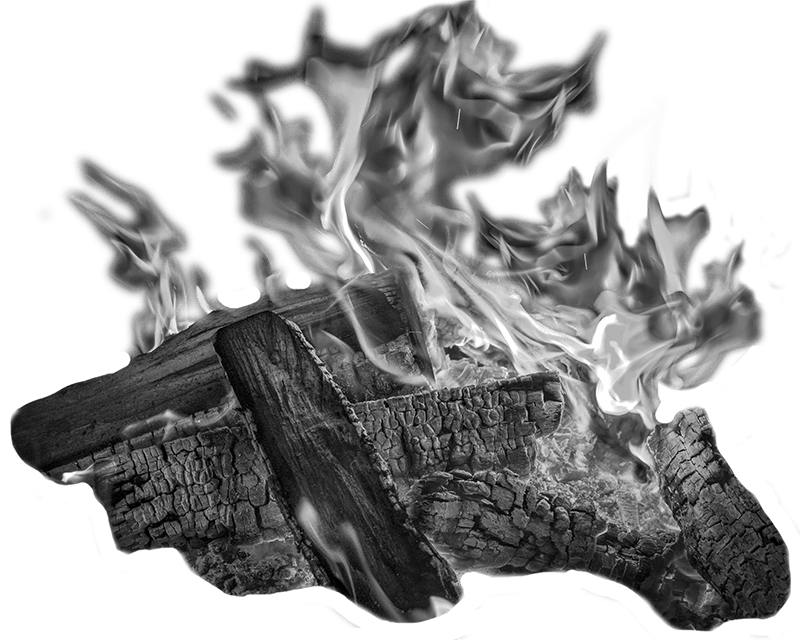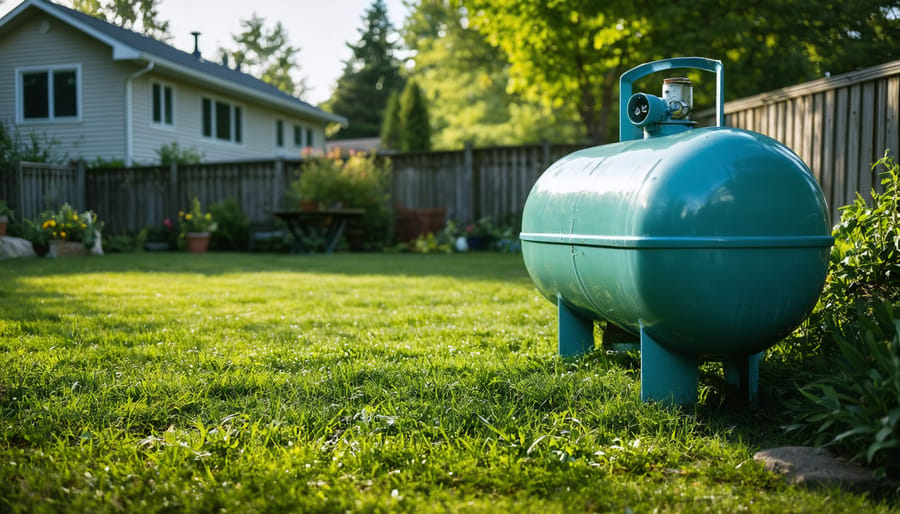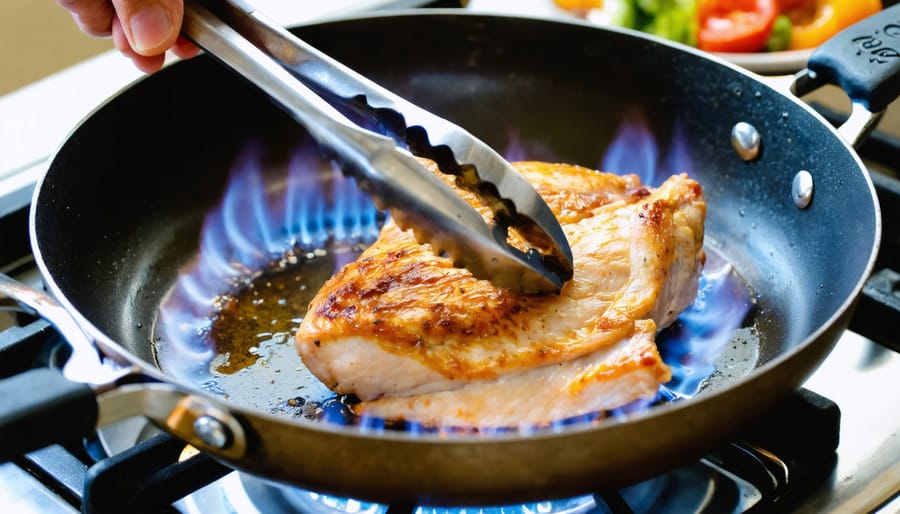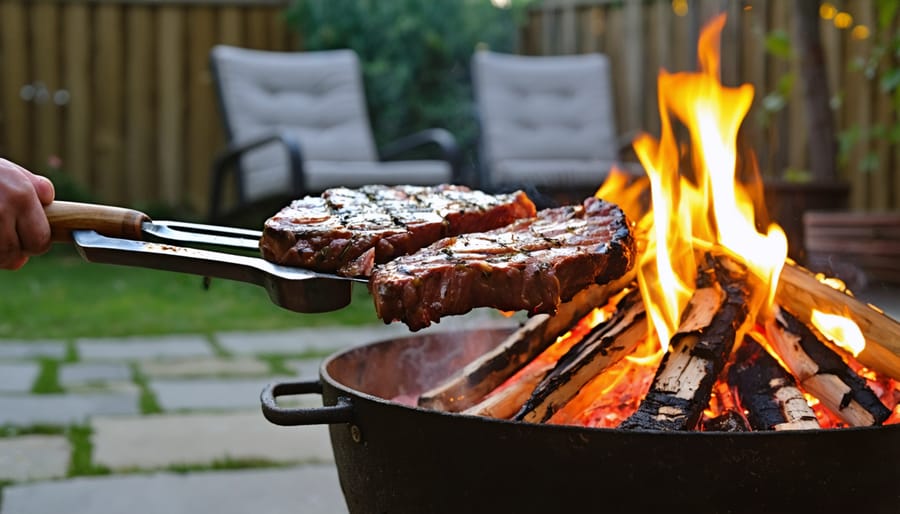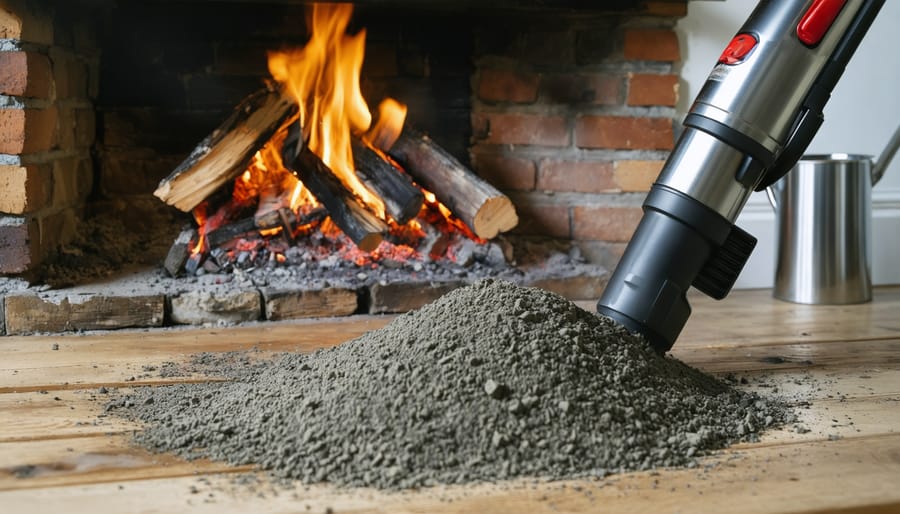A BLEVE (Boiling Liquid Expanding Vapor Explosion) represents one of the most devastating accidents that can occur in home fuel storage, capable of transforming a peaceful afternoon into a catastrophic event within seconds. When a propane tank or similar pressurized container is exposed to intense heat, the liquid inside rapidly expands, creating an overwhelming pressure that can literally tear the container apart. Unlike common fires that can be easily contained, a BLEVE unleashes both explosive force and a massive fireball, potentially endangering lives and property within hundreds of feet.
Understanding this phenomenon isn’t just academic—it’s crucial for every homeowner who uses propane tanks for heating, cooking, or other household purposes. While BLEVEs are relatively rare in residential settings, their potential for destruction makes them a critical safety concern that demands our attention. By recognizing the warning signs and implementing proper safety measures, homeowners can effectively protect their families from this serious but preventable hazard.
What Causes a BLEVE Event?
The Perfect Storm: Temperature and Pressure
The dangerous conditions leading to a BLEVE arise from a precise interplay between temperature and pressure. When sealed containers storing volatile substances experience extreme heat, liquid fuel evaporation accelerates rapidly. This creates a pressure buildup inside the container that can quickly exceed its design limits. As the liquid begins to boil, it expands dramatically, sometimes up to 1,700 times its original volume.
Think of it like a pressure cooker without a safety valve – the rising temperature causes the pressure to build continuously with nowhere to escape. This creates a vicious cycle where the increasing pressure actually raises the liquid’s boiling point, allowing even more heat energy to accumulate within the container. When the container’s structural integrity finally fails, this superheated liquid instantly vaporizes, creating an explosive force that can be catastrophic.
For homeowners using propane or other pressurized fuel systems, understanding this relationship between heat and pressure is crucial for maintaining safe storage conditions and preventing potential disasters.
Common Household Scenarios
In everyday household settings, several scenarios can create conditions for a BLEVE risk. A common situation involves propane tanks used for outdoor grills being stored in enclosed spaces or exposed to direct sunlight. Water heaters, particularly older models with compromised pressure relief valves, can pose a significant risk if maintenance is neglected. Home heating oil tanks, when improperly vented or exposed to external heat sources, may also create dangerous conditions.
Kitchen scenarios present another area of concern, especially when pressure cookers are used without proper safety checks or maintenance. Even aerosol cans stored near heat sources like radiators or sunny windowsills can become hazardous. Basement boilers and heating systems, if not regularly inspected and maintained, might develop weak points that could lead to catastrophic failure.
To minimize these risks, ensure proper ventilation in storage areas, maintain safe distances between fuel containers and heat sources, and schedule regular professional inspections of heating equipment. Remember that seemingly harmless household items can become dangerous when exposed to heat or pressure beyond their design limits.
Recognizing BLEVE Risk Factors in Your Home
Fuel Storage Warning Signs
Being alert to warning signs in your fuel storage system can prevent dangerous situations from developing. The most immediate red flag is any visible bulging or deformation in your fuel tank, which indicates dangerous pressure buildup inside. Listen for unusual hissing sounds, which could signal a vapor leak, and pay attention to any unexplained fuel odors around your storage area.
Regular visual inspections are crucial. Check for rust spots, particularly around seams and connection points, as these areas are most vulnerable to deterioration. If you notice any moisture accumulation around the tank or unusual condensation patterns, this could indicate compromised insulation or temperature control issues.
Your tank’s pressure relief valve requires special attention. If you observe any signs of tampering, damage, or malfunction in this critical safety component, immediate professional inspection is necessary. Similarly, watch for signs of damage to the tank’s support structure or mounting brackets, as structural integrity is essential for safe fuel storage.
Temperature monitoring is vital. If your tank feels unusually warm to the touch or you notice environmental changes affecting the storage area’s temperature, take immediate action. These conditions could accelerate the risk of pressure buildup and potential BLEVE incidents.
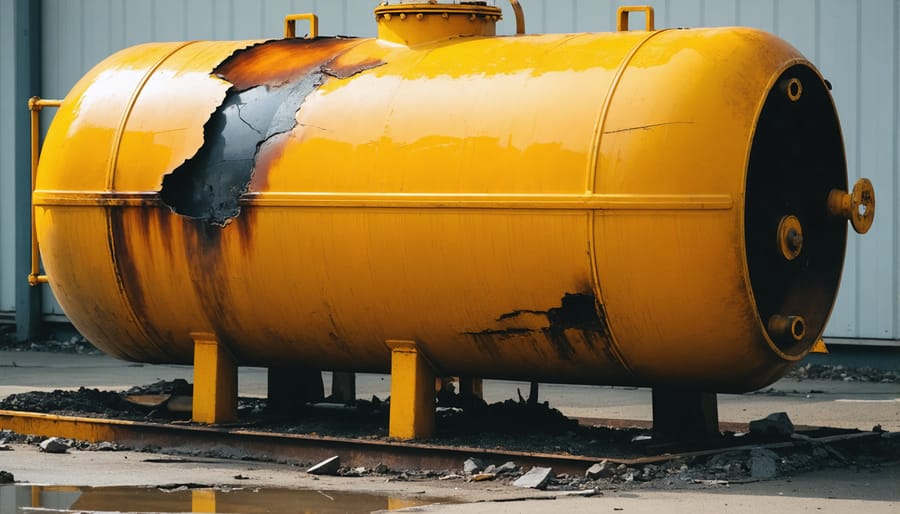
Environmental Conditions to Watch
Several environmental conditions can significantly increase the risk of a BLEVE occurring in your home’s fuel storage. High ambient temperatures, particularly during summer months, can raise the pressure inside propane tanks and other fuel containers. When temperatures exceed 90°F (32°C), extra vigilance is necessary as the liquid fuel inside the container expands more rapidly.
Direct sunlight exposure is another critical factor to watch. Even on mild days, sunlight can heat the metal surface of containers well above the ambient air temperature. This is why proper shade and ventilation are essential for any fuel storage area.
Humidity levels also play a role, as moisture can accelerate corrosion on metal containers, potentially weakening their structural integrity over time. In coastal areas where salt air is present, this risk is even more pronounced.
Weather events like storms and flooding can create hazardous conditions by potentially damaging or dislodging fuel containers. Strong winds might knock over improperly secured tanks, while flooding could submerge them, leading to contamination and increased pressure risks.
During winter, rapid temperature changes can be particularly dangerous. When frozen containers are suddenly exposed to warmth, the quick expansion of the liquid fuel inside can create unsafe pressure conditions.
Prevention and Safety Measures
Safe Fuel Storage Practices
When it comes to storing liquid fuels safely at home, proper containment is essential to prevent dangerous situations like BLEVE. Always use approved safety containers specifically designed for fuel storage, and ensure they’re properly sealed and labeled. These containers should be made of metal or specialized safety plastic, featuring pressure-relief mechanisms to prevent vapor buildup.
Store your fuel containers in a well-ventilated area away from living spaces, preferably in a dedicated outdoor storage shed or garage. Keep them away from direct sunlight and heat sources, maintaining a stable temperature between 50-70°F (10-21°C). Never store fuel containers near potential ignition sources or electrical equipment.
Remember to leave about 10% empty space in containers to allow for natural expansion of the liquid. This simple practice helps prevent pressure buildup that could lead to a BLEVE incident. Regularly inspect your containers for signs of damage, rust, or deterioration, and replace them if you notice any compromised areas.
Don’t store more fuel than you’ll use within a few months, as fuel quality can degrade over time. Keep different types of fuels separated and clearly marked to avoid confusion. For added safety, consider installing a fire detector in your storage area and keeping a suitable fire extinguisher nearby.
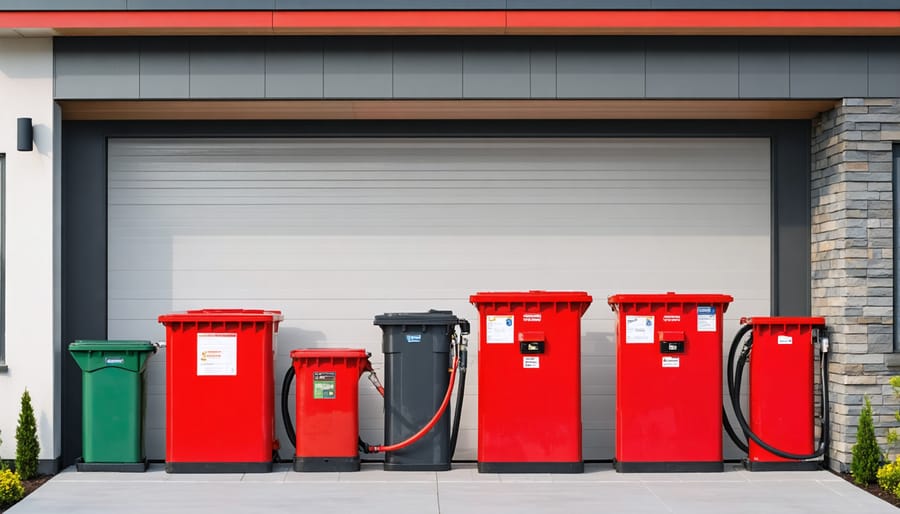
Emergency Response Planning
Effective emergency response planning is crucial for preventing and managing potential BLEVE incidents in home heating systems. Start by creating a detailed evacuation plan that includes multiple escape routes from areas where fuel is stored or used. Ensure all family members know these routes and establish a designated meeting point at a safe distance from your home.
Install appropriate safety equipment, including smoke detectors, fire extinguishers, and gas leak detectors near fuel storage areas. Regularly test and maintain these devices according to manufacturer recommendations. Keep emergency contact numbers, including fire department and gas company, readily accessible.
In the event of a potential BLEVE situation, immediately evacuate the area and call emergency services. Never attempt to fight a fire involving pressurized containers or fuel tanks. If safe to do so, shut off the main gas supply before evacuating. Alert neighbors who might be affected and keep bystanders away from the danger zone.
Consider installing emergency shutoff valves that can be accessed from a safe distance. Document the location of all fuel storage containers and provide this information to emergency responders. Regular maintenance checks and proper storage practices are your best defense against BLEVE incidents.
Participate in local emergency preparedness programs and keep first aid supplies readily available. Remember, prevention through proper maintenance and swift evacuation when danger is detected are key to protecting your family and property.
Alternative Fuel Options and Safety
When it comes to home heating, choosing safer fuel alternatives can significantly reduce the risk of BLEVE incidents while maintaining efficient warmth. Modern alternatives to traditional liquid fuels offer enhanced safety features and peace of mind for homeowners. Electric heating systems, while requiring proper installation, eliminate the risks associated with fuel storage entirely. For those preferring the ambiance of flames, natural gas and propane systems with built-in safety mechanisms provide reliable heat while following kerosene safety guidelines and proper storage protocols.
Eco-friendly options like pellet stoves offer another safe alternative, using compressed wood pellets that pose minimal explosion risks. These systems not only provide consistent heat but also contribute to sustainable heating practices. Heat pumps represent another modern solution, combining safety with energy efficiency by extracting heat from the environment rather than relying on combustible fuels.
For those who must use liquid fuels, newer storage containers with pressure-relief valves and improved ventilation systems help prevent dangerous pressure buildup. Additionally, smart monitoring systems can alert homeowners to potential issues before they become dangerous, offering an extra layer of protection against BLEVE incidents while maintaining the comfort and warmth you desire in your home.
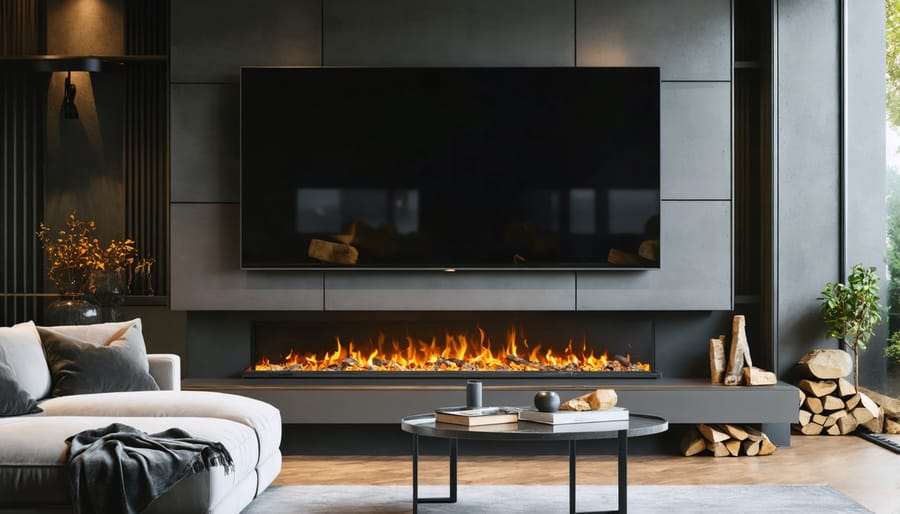
Understanding and preventing BLEVEs is crucial for maintaining a safe home environment, particularly when dealing with liquid fuels and heating systems. Remember to always store fuel containers in well-ventilated areas away from heat sources, regularly inspect containers for damage or leaks, and never exceed recommended storage quantities. Implementing proper safety measures, such as installing fire detection systems and maintaining clear emergency exits, can significantly reduce the risk of these dangerous explosions. By staying informed about BLEVE hazards and following recommended safety protocols, you can protect your home and loved ones while safely enjoying the warmth and comfort of your heating systems. If you have any concerns about your fuel storage or heating setup, don’t hesitate to consult with a qualified professional who can assess your specific situation and provide tailored safety recommendations.
